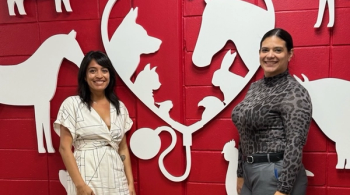
Why some veterinarians don't like cats-and how to change
By handling feline friends with special veterinary care, we can begin to change diabolical and hysterical stereotypes of them.
During my search for an associate veterinarian, I interviewed several new graduates and younger veterinarians. I was surprised to learn most of them regard cats as pariahs of the animal kingdom. It seemed that the majority of them who were interested in companion animal practice wanted to work with dogs. Apparently, I missed the veterinary school class in which cats are branded as vicious and mean.
In my opinion, nothing is wrong with cats. But they do have a mystique about them, which continues to grow because many veterinarians don't understand feline behavior. When we handle dogs, horses, hogs, cattle and other species, we tend to overpower them. Cats, on the other hand, must be finessed. A big reason cats behave the way they do is related to fear aggression. They puff up, growl, hiss and swat at us. Still, cats likely think veterinarians are stupid. After all of the warnings they give off, we persist in annoying and scaring them. So how should we expect them to react? The more stress and power we use to intimidate, the faster we will lose the game and end up hurt—or the patient will get hurt. When force is applied, a cat can become hysterical and dangerous. The long-term emotional damage will result in increasingly difficult visits every time afterward.
Believe it or not, feline patients and their owners can be enjoyable to work with. Cats will respond to special handling: slow movement, no loud talk, no reprimands—quiet, low-key restraint. When treated this way, cats can be cuddly, playful and entertaining. They have interesting and challenging medical problems that allow us to use our skills, prolong lives and return feline companions to grateful clients. (They also tend to have very dedicated owners.)
Here's a simple tactic to try to avoid resistance: Ask the owner to keep his or her cat in the carrier until you enter the exam room; once the cat is out of the carrier, have it face its owner. Using this method, I can safely examine most cats by myself with little or no restraint. I believe this is because the cat is looking at the person they trust and aren't sure whose hands are on them because they can't see me. I also use cat treats, an otoscope light in front of the cat, toys and light petting on the head and chin to distract throughout an exam. I talk to the owner in a low and calm voice as I explain what I am looking at or feeling for and describe my findings.
Change your approach and practice these specific cat-handling skills, and you will be rewarded with both an appreciative cat and client. This is the way we help improve cats' veterinary hospital reputation.
Joan Freesh, MS, DVM, owns St. Louis Cat Hospital in St. Louis, Mo. Please send any questions or comments to
Newsletter
From exam room tips to practice management insights, get trusted veterinary news delivered straight to your inbox—subscribe to dvm360.






